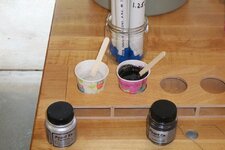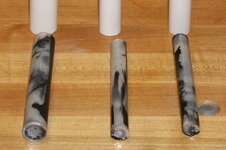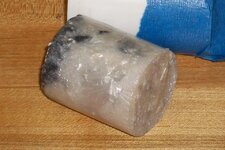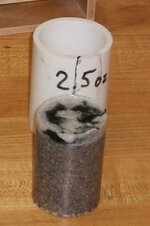Bill Arnold
Member
I finally made my first attempt at casting a couple of pen blanks and bottle stopper blanks today. I wanted to keep it simple, so I used Pearl-Ex Black and Pearl-Ex White. I measured 3oz of Silmar41 into each of 2 paper cups, then added the dye to each cup - about 1/4tsp to each. After stirring the dye to mix it, I added 15 drops of MEKP to each cup, stirring thoroughly, but never whipping the mixture. The air temperature was in the mid-80s. I stirred each cup about every five minutes, keeping an eye on the thickness of each. They seemed to be coming along about the same and I was waiting for them to be thick enough not to just mesh together in the forms (PVC pipe). After 15-20 minutes, there was noticeable thickening, but both were still a bit loose to pour. When I checked again 3-4 minutes later, the black was what I thought would be thick enough in a couple more minutes, but the white had suddenly thickened to a point it was not pourable at all. What happened?




